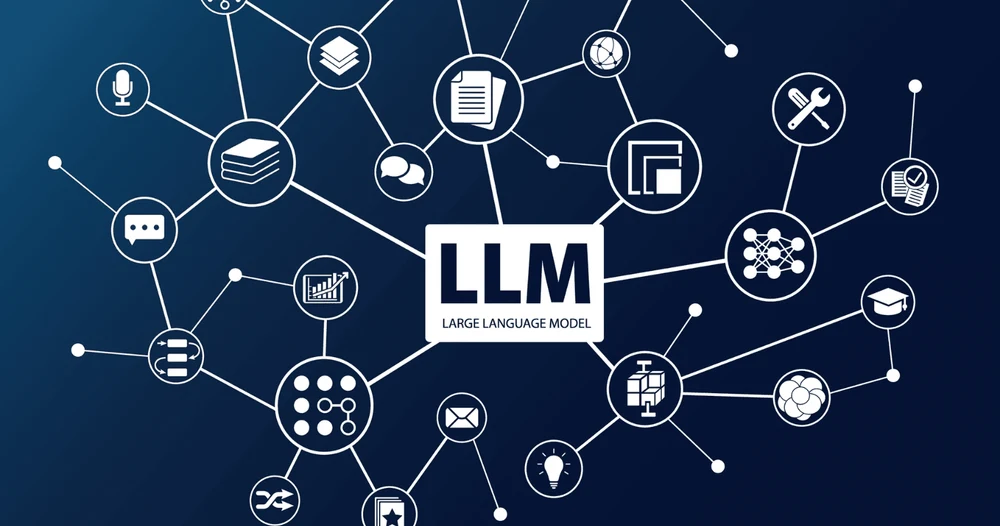An overview of LLMs and Generative AI
- June 14, 2024
- Generative AI

Large Language Models (LLMs) and Generative AI are revolutionizing various industries by
enhancing the capabilities of artificial intelligence (AI) in unprecedented ways. This blog aims to
provide a general overview of these technologies, discuss their advantages and disadvantages,
and explore how they can be leveraged for engineering activities in product development.
What Are Large Language Models (LLMs) and
Generative AI?
Large Language Models
LLMs are a subset of deep learning artificial intelligence (AI) models designed to understand
and generate human-like text based on vast amounts of data. These models, such as GPT,
Llama, Mistral, etc. are trained using deep learning techniques on diverse datasets, enabling
them to perform tasks like language translation, summarization, and content creation.
Generative AI
Generative AI refers to algorithms that can create new content, including text, images, music,
and more. Unlike traditional AI, which follows predefined rules to analyze data, generative AI
models learn patterns from existing data and use them to generate new, original outputs.
Advantages of LLMs and Generative AI
1. Enhanced Creativity and Productivity
- These LLMs can produce high-quality content quickly, aiding in creative processes such as writing, design, and music composition.
- They automate repetitive tasks, freeing up human resources for more strategic activities.
2. Improved Customer Experience
- LLMs power advanced chatbots and virtual assistants that provide personalized and efficient customer service.
- They enable more natural and engaging interactions with users.
3. Data Analysis and Insights
- Generative AI can sift through vast datasets to identify patterns and generate insights, aiding in decision-making processes.
- These models can automate the generation of reports and summaries, saving time and effort.
4. Accessibility and Language Translation
- LLMs facilitate real-time language translation, breaking down language barriers.
- They can convert written text into speech, aiding those with visual impairments.
Disadvantages of LLMs and Generative AI
1. Bias and Ethical Concerns
- LLMs can perpetuate and amplify biases present in training data, leading to unfair or discriminatory outputs.
- The use of generative AI for creating deep fakes and misinformation poses significant ethical challenges.
2. Resource Intensive
- Training and running large models require substantial computational power and energy, leading to high operational costs.
- There are environmental concerns related to the energy consumption of these models.
3. Quality Control and Reliability
- While LLMs can generate impressive content, they are not infallible and can produce incorrect or nonsensical outputs.
- Ensuring the reliability and accuracy of AI-generated content remains a challenge.
4. Security and Privacy Issues
- The vast amount of data needed to train these models raises concerns about data privacy and security.
- Generative AI can be misused for creating convincing phishing attacks and other malicious activities.
Leveraging LLMs and Generative AI for Engineering Activities
System Development and Automation
Code Generation and Debugging
LLMs can assist developers by generating code snippets, suggesting improvements, and even
identifying and fixing bugs. Tools like GitHub Copilot exemplify this application, making coding
more efficient and reducing development time.
Automated Documentation
Generative AI can create comprehensive and coherent documentation for codebases, APIs,
and systems, ensuring that developers have access to up-to-date and accurate information.
Design Prototyping
In system design, generative models can help create prototypes and mockups, providing a
visual representation of the end product and allowing for rapid iteration and feedback.
Enhancing Collaboration and Communication
Natural Language Processing (NLP) Tools
NLP tools powered by LLMs can facilitate better communication among team members by
translating technical jargon into plain language and vice versa, ensuring everyone is on the
same page.
Virtual Assistants for Project Management
AI-driven virtual assistants can manage tasks, schedule meetings, and track project progress,
allowing teams to focus more on development and less on administrative duties.
Large Language Models and Generative AI hold immense potential for transforming various
aspects of engineering and development activities in system development. Their ability to
generate content, automate tasks, and facilitate communication can lead to significant
productivity gains and innovation. However, it is crucial to address the challenges related to
bias, resource consumption, reliability, and security to harness these technologies responsibly
and effectively.
By understanding and leveraging the strengths of LLMs and generative AI while mitigating their
drawbacks, organizations can unlock new possibilities and drive the future of technology
forward.
